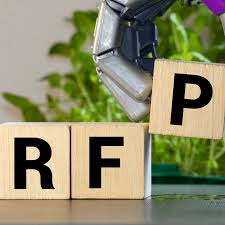I recognize that I’m jumping around in my continued series on “Things we thought we understood about selling, but really don’t.” Today’s topic is RFPs. Normally, I do everything I can to ignore these, but in talking to clients, I realize how misunderstood these are, and how poorly we leverage the RFP process.
First, I have to confess a bias. We never respond to a RFP that we haven’t written!
While that sounds arrogant, it illustrates the key point we miss about RFPs and managing them. Recently, I spoke to a VP of Sales. He said, “Most of our business is RFP driven….”
I asked, “What do you mean?”
“The way lots of our customers buy is through RFPs, so we hunt for RFPs, responding to them. We hope to win our fair share…..,” he responded.
Yes, as much as I despise them, RFPs are a part of many organizational buying processes. Some, like governmental organizations, are required to issue RFPs. Other organizations find RFPs a method to “level the playing field, driving a consistent evaluation process across all alternatives…”
RFPs are here to stay, and, to be honest, are not a bad way of evaluating alternatives. And there are ways to construct RFPs for even the most complex buying decisions.
But here’s the real issue about managing opportunities leveraging a RFP process. If our first engagement is participating in a buyer’s conference, where a RFP is issued, we are seriously disadvantaged. We are minimizing our ability to create value with the customer, differentiating ourselves, and positioning our offerings.
Selling to organizations starts long before the RFP is issued. If starts like any other buying process. We might incite these customers to change, helping them to discover ways to grow and improve. We might talk to a customer about a problem they have, the impact of that problem, getting them to commit to a change.
Then there is the customer learning and problem solving process. What problem are they trying to solve, what do they need to learn about the problem, what do they need to learn about how others have addressed the issues, what are the risks, how do they align around priorities in looking for a solution, how will the manage consensus through the process, how will they make a choice?
The buying process for organizations leveraging RFPs is no different than any other buying process!
Yet sellers don’t understand this, too often thinking selling starts with the response to the RFP. “If we have a great response (and the lowest price), we will win.
That’s why I say, I never respond to a RFP that I haven’t written.
To develop the RFP, the customer is going through the same process every other buyer goes through. They need help in the process.
Buyers may go through a number of semiformal steps in developing their RFP. They may issue a RFI, sometimes followed by a RFQ, ultimately culminating in the RFP. Buyers often, use this process to help manage consensus within the buying group–it’s less oriented to sellers, but they want to make sure everyone on their team is on the same page.
And like every other buyer, sellers can provide huge value in helping them learn and align around what they want to achieve, how to do this, and what they want to look for in a solution.
This work with the customer creates huge value for them. As they develop their requirements, they incorporate the ideas and suggestions of those people helping them learn and understand. We influence what the customer thinks is important and how they express that in their RFP. We influence how the customer evaluates the responses to the RFP to make a decision.
So the complaints many of us have about customers leveraging RFPs are really about our selling error, not the problems with the customer RFP. If our first visibility to a customer buying initiative is the RFP, then we have not done our jobs.
RFPs are not really different than any other buying process. They still require us to engage the customer in great selling!

Not once did you define “RFP”
“That’s why I say, I never respond to a(n) RFP that I haven’t written.”
the wisdom inside that simple sentence.